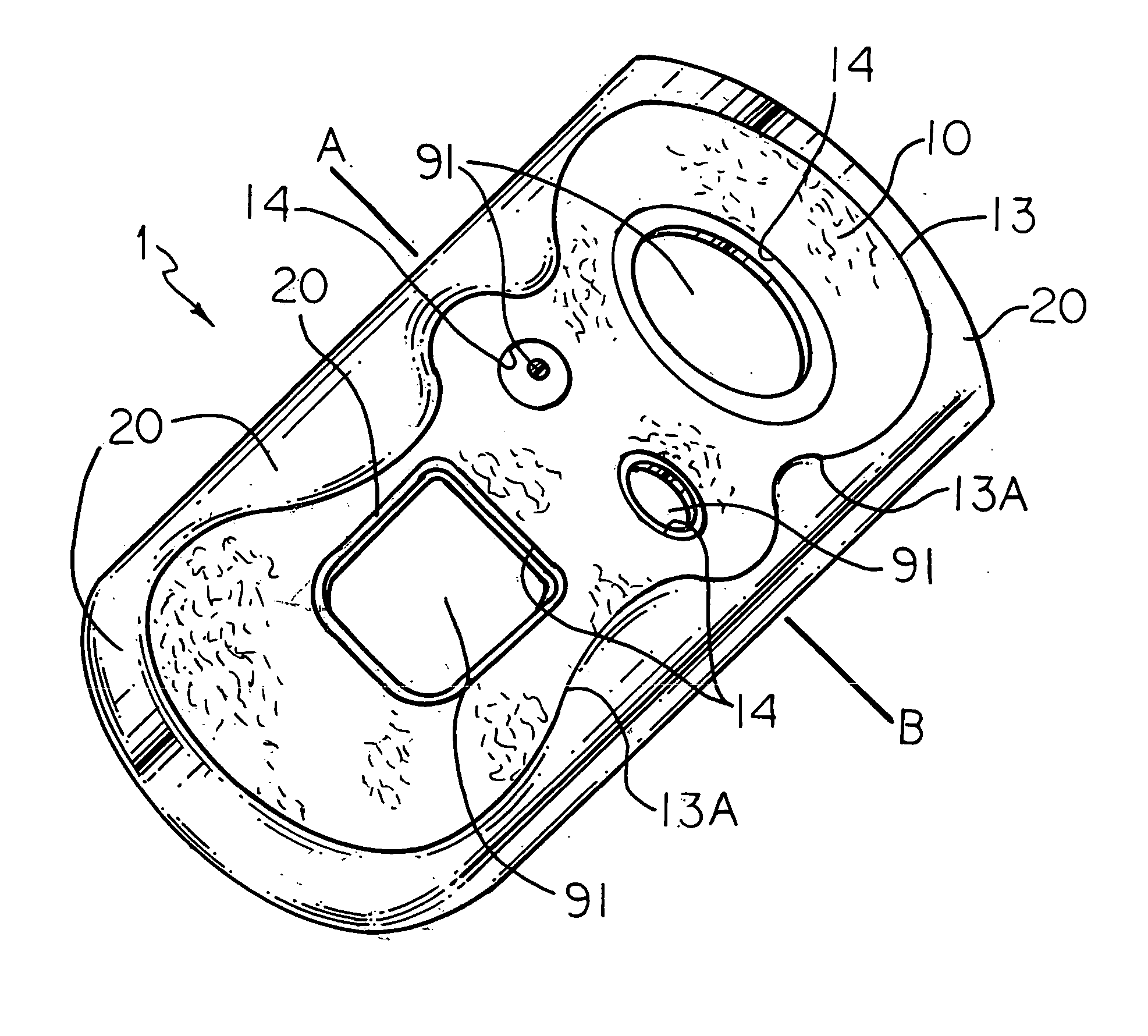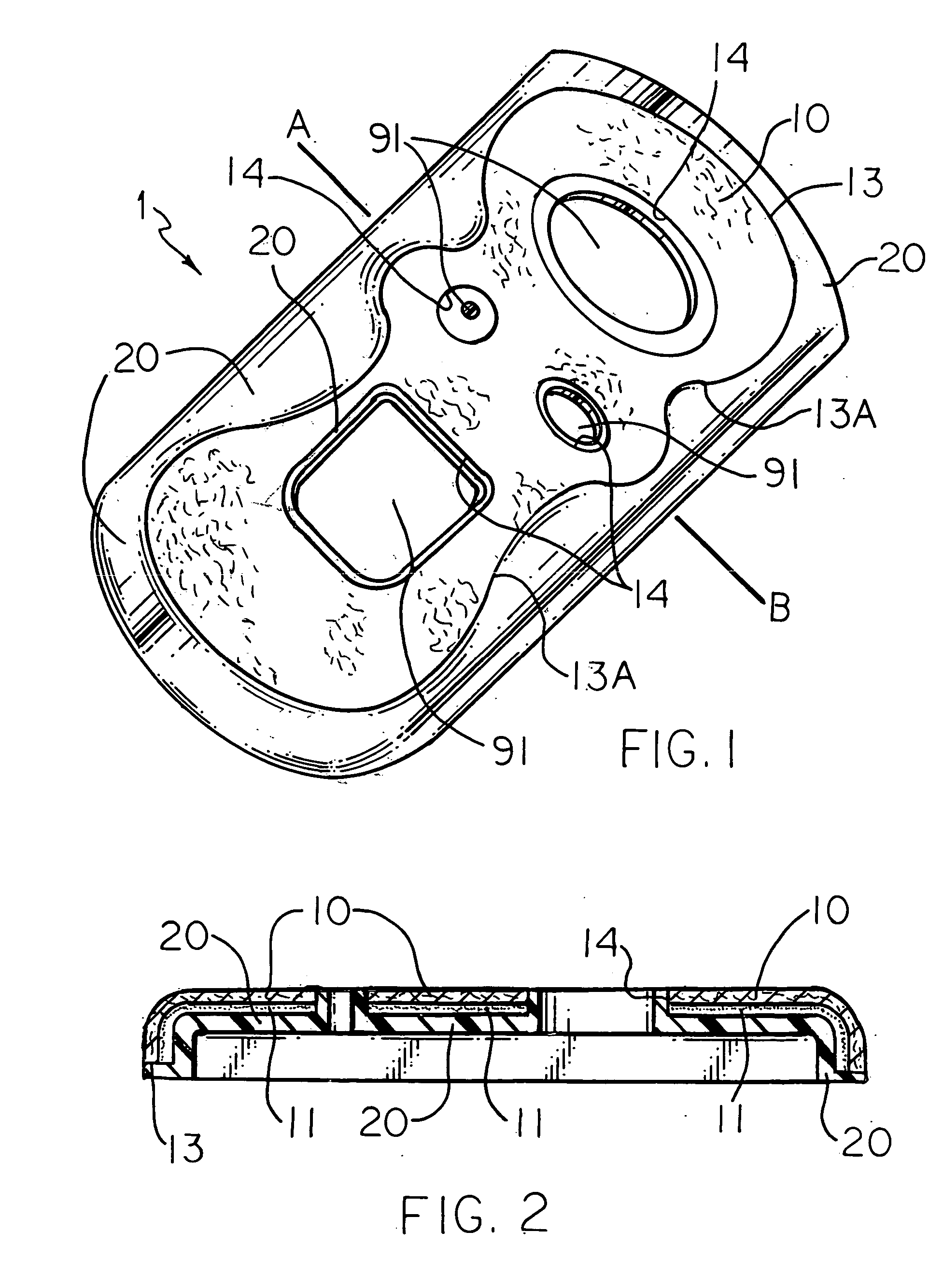Molded parts with discontinuous fabric surface areas and processes for their production
a technology of discontinuous fabric and molded parts, which is applied in the direction of weaving, other domestic articles, woodworking apparatus, etc., can solve the problems of affecting the quality of molded articles, and unable to eliminate secondary operations, so as to achieve fast and efficient process, prevent fabric material damage, and improve quality
- Summary
- Abstract
- Description
- Claims
- Application Information
AI Technical Summary
Benefits of technology
Problems solved by technology
Method used
Image
Examples
examples
[0025] A part according to the present invention as generally shown in FIG. 1 was designed and produced as follows. A non-woven polyester fabric was laminated to a polycarbonate film 0.005 inches (approx. 0.13 mm) thick by the use of a thermally initiated ethylene vinyl acetate (EVA) adhesive film commercially available from The Dow Chemical Company as Integral 801 brand film. The lamination was conducted at 220 degrees C. (set-point temperature for heating the rolls) on a two-roll laminator. The resulting laminate was pre-cut to the desired size and shape (including internal openings) and inserted into the desired location between the cavity and the core on an injection mold. Placement required careful alignment such that the fabric openings and their edges aligned with the mold surfaces where there would be openings and peripheral fabric edges aligned with their desired locations. The desired fabric front surface is placed against the cavity and held in place by the use of vacuum....
PUM
| Property | Measurement | Unit |
|---|---|---|
| densities | aaaaa | aaaaa |
| densities | aaaaa | aaaaa |
| thickness | aaaaa | aaaaa |
Abstract
Description
Claims
Application Information
 Login to View More
Login to View More - R&D
- Intellectual Property
- Life Sciences
- Materials
- Tech Scout
- Unparalleled Data Quality
- Higher Quality Content
- 60% Fewer Hallucinations
Browse by: Latest US Patents, China's latest patents, Technical Efficacy Thesaurus, Application Domain, Technology Topic, Popular Technical Reports.
© 2025 PatSnap. All rights reserved.Legal|Privacy policy|Modern Slavery Act Transparency Statement|Sitemap|About US| Contact US: help@patsnap.com


